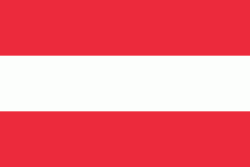Reichenau (Reichenau)
Reichenau (Rajnava) is a municipality in the district of Feldkirchen in the Austrian state of Carinthia.
The municipal area is situated in the upper valley of the Gurk River within the Nock Mountains range (part of the Gurktal Alps). In the north, the road from Feldkirchen leads up to Turracher Höhe Pass and Turracher See at a height of 1763 m AA on the border with Predlitz-Turrach in Styria and further down into the Mur Valley. Another small mountain lake is Falkertsee at 1872 m in the west. Reichenau is the eastern terminus of the Nockalmstraße scenic route through the Nock Mountains to Krems.
Reichenau consists of the cadastral communities Ebene Reichenau, Sankt Lorenzen, Sankt Margarethen, Wiedweg, and Winkl.
The municipal area is situated in the upper valley of the Gurk River within the Nock Mountains range (part of the Gurktal Alps). In the north, the road from Feldkirchen leads up to Turracher Höhe Pass and Turracher See at a height of 1763 m AA on the border with Predlitz-Turrach in Styria and further down into the Mur Valley. Another small mountain lake is Falkertsee at 1872 m in the west. Reichenau is the eastern terminus of the Nockalmstraße scenic route through the Nock Mountains to Krems.
Reichenau consists of the cadastral communities Ebene Reichenau, Sankt Lorenzen, Sankt Margarethen, Wiedweg, and Winkl.
Map - Reichenau (Reichenau)
Map
Country - Austria
 |
 |
| Flag of Austria | |
Austria emerged from the remnants of the Eastern and Hungarian March at the end of the first millennium. Originally a margraviate of Bavaria, it developed into a duchy of the Holy Roman Empire in 1156 and was later made an archduchy in 1453. In the 16th century, Vienna began serving as the empire's administrative capital and Austria thus became the heartland of the Habsburg monarchy. After the dissolution of the Holy Roman Empire in 1806, Austria established its own empire, which became a great power and the dominant member of the German Confederation. The empire's defeat in the Austro-Prussian War of 1866 led to the end of the Confederation and paved the way for the establishment of Austria-Hungary a year later.
Currency / Language
| ISO | Currency | Symbol | Significant figures |
|---|---|---|---|
| EUR | Euro | € | 2 |
| ISO | Language |
|---|---|
| HR | Croatian language |
| DE | German language |
| HU | Hungarian language |
| SL | Slovene language |















